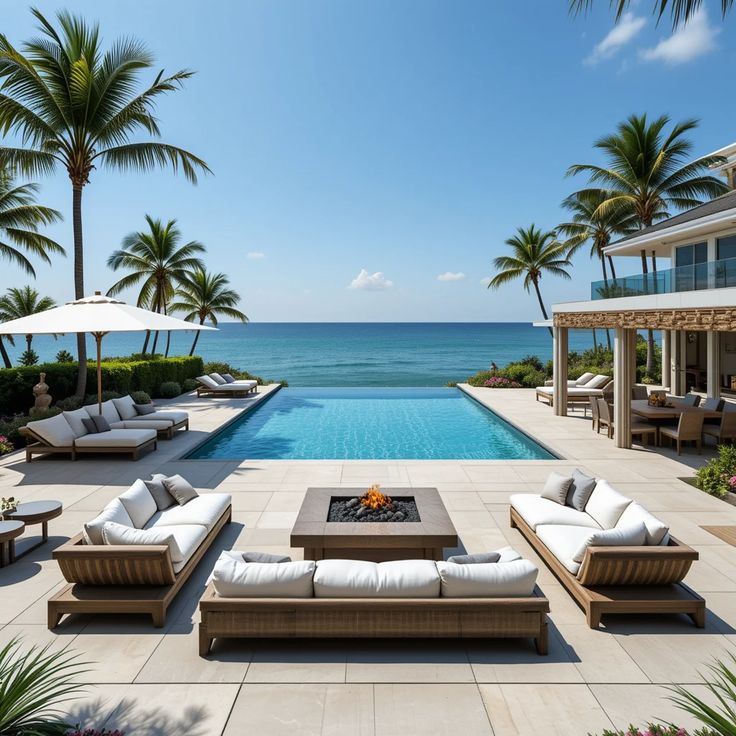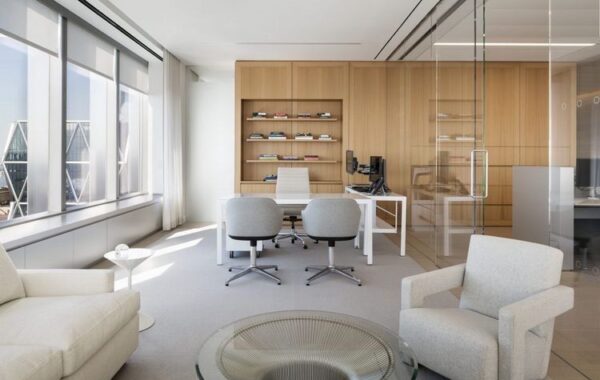
Luxury Interior Design: Going on Vacation vs. Investing in Your Home
These luxury interior design trends bring the holiday to your doorstep.
Every December, Nairobi traffic thins as families head to Diani while others fly to Dubai, chasing peace they rarely feel at home. Hotels overflow, bank accounts are overdrawn, and after a week of fun and merry, everyone returns to the same dull walls and uninspiring spaces they call home. Come January, the question we often hear in our interior design consultation in Kenya is simple but sharp. Why do our homes stop feeling like places we love to stay?
That question exposes a national dilemma—escape versus investment. Most Kenyans save for getaways, not for good home design and then return home to deal with post-vacation depression. Yet a few homeowners are starting to choose differently. They’re turning their spaces into daily retreats, proving that you don’t have to travel to feel alive again.
Escaping vs Evolving
Just for this year, choose to evolve by investing in your home. Vacations reward the brain instantly. They deliver new sights and experiences –maybe you choose to stay in beautifully designed 5 star hotel with access to the beach or do a tented camp–whatever the case, you pay a pretty penny to have fun. But after a few days, the feeling fades, and you go back home. Broke.
Investing in luxury interior design is permanently rewarding. The soft light in a redesigned living room, the cool gypsum ceiling that breathes freshness, the flow of color and space—all become daily triggers of calm. It’s the same emotional pleasure as a holiday, only sustained.
So while most people spend upwards of KSh 200,000 on flights and hotels each year, a similar amount could fund lighting, color work, and interior updates that change how you live every single day. Here are some of the top styles to help you achieve that.
Read also: When Basket Express Upgraded with Prime House Interiors, Sales Soare
How to add the vacation feeling in everyday spaces
Hotels are masters of luxury interior design because every surface and proportion is intentional. Walls and ceilings are treated as architectural canvases—never left bare. Start with your entryway, often called the “decompression zone.” Smooth wall finishes, warm off-white or stone tones, and gypsum ceiling details with recessed lighting immediately soften the transition from outside noise to interior calm. Subtle wall niches or textured wall panels add rhythm without clutter, while indoor plants or controlled fragrance signal a deliberate shift from public to private space.
In living rooms, replicate resort-style symmetry through spatial layout and surface treatment. Use low seating to visually lower the room’s center of gravity, pair it with wide rugs that anchor the space, and keep wall sight lines clear by avoiding overhanging decor. Natural light should be maximized during the day through reflective wall paints and strategically placed mirrors, then layered with ceiling lighting—such as cove LEDs or pendant clusters—that emulate warm sunrise tones in the evening. Ceilings often incorporate bulkheads or recessed panels to conceal fittings and shape light flow, a hallmark of luxury interiors.
Spa bathrooms without travel
Luxury hotels achieve serenity through surface performance and sensory layering, not just décor. To replicate this at home with luxury interior design in Kenya, start with moisture-resistant marble or high-grade porcelain tiles on both walls and floors. These materials maintain their finish despite constant humidity and are easy to sanitize. Pair them with hidden strip lighting tucked behind mirrors or under floating vanities, which creates a soft, even glow without harsh shadows. Adjustable mirrors with anti-fog coatings ensure functionality, while neutral, warm tones on walls keep the atmosphere calm and spa-like.
Beyond finishes, the ceiling and lighting plan are what turn a functional bathroom into a retreat. Use gypsum ceilings with integrated LED channels to conceal wiring and create a seamless canopy effect. Dimmable light zones allow you to shift between bright task lighting for mornings and soft, indirect lighting for evening baths. Add acoustic insulation above ceilings or wall partitions to minimize sound transfer—this detail is often overlooked in homes but is standard in high-end spa suites.
Read also: How an Overwhelmed Homeowner Saved Money and Time by Trusting Prime House Interiors
Kitchens that revive energy
A well-designed kitchen is equal parts task lighting, surface performance, and spatial planning. In a Ruiru luxury interior design project, we replaced harsh fluorescent tubes with layered LED circuits—cool white task strips under cabinets, neutral ceiling downlights for general illumination, and warm accent lighting above display shelves. This triple-layered system reduces glare and shadows, making prep work easier while shifting the mood from day to night with dimmers.
Cream lacquered cabinetry paired with brushed gold handles introduced reflective warmth without overpowering the space. Quartz countertops were chosen not only for their luxury look but for their non-porous surface, which resists stains and withstands the daily thermal shocks of hot pots and cold chopping boards.
Read also: Fitness Centers: Best Gym Designs in Nairob
Bedrooms luxury interior design ideas in Kenya
Bedrooms must be acoustically calm, thermally stable, and visually soothing to support true physiological rest. We start by installing soft acoustic wall panels or upholstered headboards to absorb ambient noise, a crucial feature in urban Nairobi estates with traffic or shared walls. Blackout curtains on double tracks block external light while allowing sheer daytime filtering when desired.
The bedroom ceiling is often underestimated—gypsum drop ceilings with concealed perimeter lighting create a calming halo effect that avoids direct glare, and hidden wiring keeps the aesthetic seamless. Temperature control through proper insulation and ceiling fans or low-decibel split units completes the comfort envelope.
Color and lighting then set the psychological tone. Muted dusk palettes—soft taupes, sandy beiges, and deep evening blues—help lower heart rates, mimicking natural circadian cues. Bedside lighting should be individually switched, dimmable, and positioned to avoid direct glare into the eyes when lying down.
Minimalist wall décor prevents visual overstimulation, and concealed storage keeps clutter out of sight. Together, these elements transform the bedroom from a functional sleeping space into a bespoke retreat, rivaling the restorative calm of luxury hotel suites.
Balance, flow, and energy
Energy is everything when it comes to luxury interior design in Kenya. Whether inspired by feng shui or architectural rhythm, the goal is the same: no abrupt visual or physical interruptions between rooms. Corridor widths should maintain a minimum of 900 mm to allow easy passage, while furniture should align with natural movement paths to avoid sharp corners jutting into walkways.
Open-plan living areas can benefit from strategic ceiling or floor level changes that subtly zone spaces without adding walls. Mirrors should placed opposite windows to amplify daylight and expand perceived space to prevent post-vacation depression. Using light-reflective wall paints in neutral tones can lift your overall mood.
Electrical circuits should be zoned to allow rooms to be lit progressively as one moves through the house, reinforcing psychological calm. By layering light, aligning circulation, and controlling surface rhythm, you create homes that feel effortless to inhabit—an everyday luxury that hotels master and homeowners can replicate with careful planning.
Vacation or Luxury Interior Design? Choose Wisely
Many homeowners fear interior design is expensive. Yet modern planning proves otherwise. The cost of a complete living room transformation can equal a single family holiday— depending on finishes. The difference is longevity. Good design transforms your home to feel like a luxury hotel for entire lifespan of the property. It’s money well spent.
| Factor | Investing in Luxury Interior Design | Spending on a Vacation |
|---|---|---|
| Initial Cost | A well-executed luxury interior redesign (e.g., kitchen, living room, or full house) can range from KES 300,000–3M+, depending on finishes and scale. | A high-end local or international vacation (e.g., Santorini, Dubai, Maldives) can cost KES 400,000–2M+ for 1–2 weeks, covering flights, accommodation, and activities. |
| Longevity of Value | Interior upgrades last 5–15+ years, increasing both comfort and property value, especially in urban hubs like Nairobi, Ruiru, or Mombasa. | Vacations are temporary experiences; once over, there’s no physical asset or resale value, apart from memories and photos. |
| Daily Lifestyle Impact | A luxurious, well-designed home improves daily mood, energy, and family bonding. Returning to a beautiful kitchen or bedroom has a lasting psychological benefit. | After returning from vacation, the contrast between the holiday experience and a dull home can create a post-vacation depression, making home feel even less inspiring. |
| Financial Returns | High-end finishes (quartz counters, quality cabinetry, lighting layers) can increase property resale or rental value by 10–25%, especially for Airbnbs or modern estates. | Vacations rarely generate financial returns; in most cases, they are a pure expense, with no appreciation or future earning potential. |
| Social Perception | A stylish, elegant home can position you as forward-thinking, successful, and family-oriented, especially among Nairobi’s style-conscious middle and upper classes. | Vacations offer short bursts of social status (Instagram moments, stories), but the effect fades quickly once the trip ends. |
| Psychological & Emotional Return | Interior design upgrades create long-term satisfaction, a sense of pride, and a daily feeling of being “on holiday” at home. | Vacations provide intense short-term joy and exploration, but the emotional high typically lasts 1–3 weeks after returning. |
The Long Term Mindset
Vacations end. Designed homes give you permanent value. When you invest in luxury interior design, you’re transforming your home into a perfect getaway. Every time light hits your walls just right, your brain repeats the message: I’m safe. I’m successful. I’m home.
So maybe this year, skip the flights and redesign the feeling instead.
Because when the space around you reflects peace, you never need to leave to find it.
Call Prime House Interiors +254 721 502 251 to start your transformation today—where every day feels like vacation.



